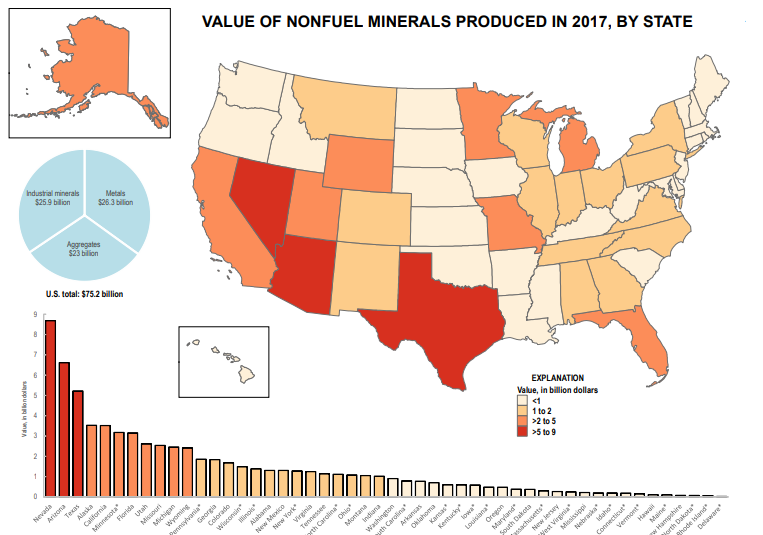Minnesota Falls in State Mining Rankings, Again…
Minnesota produced metals and minerals, primarily iron ore, sand, gravel, and dimension stone valued at $3.18 billion dollars in 2017, making it the sixth-largest state in terms of the monetary value of the metals and minerals produced that year, according to the United States Geological Survey (USGS).
However, Minnesota’s rank has been falling for the last several years. For example, in 2012, Minnesota ranked third, behind only gold-rich Nevada and copper-rich Arizona at first and second, respectively, in terms of minerals and metals production.

Normally, year-to-year fluctuations in state rankings would not be anything to get overly worried about because rankings like these are highly dependent upon factors like global commodity prices. However, Minnesota’s slide has occurred while other states have gained ground by choosing to develop their mineral resources while Minnesota has kept theirs in the ground.
For example, in 2012, Wisconsin ranked 31st in mineral and metal production, producing just $599 million dollars worth of these commodities. By 2017, Wisconsin had rocketed up to 15th in the standings, producing $1.49 billion in minerals and metals.
Wisconsin achieved this feat largely by developing their industrial sand deposits (used primarily as frac sand) that are present in Western Wisconsin and Southeastern Minnesota. Minnesota could have developed more of these resources, but the state and several local governments imposed more unnecessary regulatory hurdles for sand mines to clear, impeding their development.
Developing Minnesota’s enormous wealth of copper, nickel, and platinum group elements, along with gold, titanium, and industrial sand deposits give Minnesota a real opportunity to take back their place as the third-largest minerals producing state in the country.
Hopefully, we seize the opportunity.